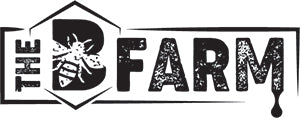When you step into the shoes of a beekeeper, you may notice the hive placement immediately. How do the hives look? They aren’t in random spots around the apiary, that’s for sure. Apiarists carefully strategize a plan based on orientation and pattern to avoid affecting the health and productivity of their colonies. Instead of taking a backseat in beekeeping education, learn how beekeepers organize and arrange their hives so you can do it in your own apiary.
Facing the Right Direction
Beekeepers prefer orienting their hives east or southeast. The morning sunshine warms the hive, so bees feel more encouraged to forage. An early start means more time to collect nectar and pollen, leading to a more productive hive! Additionally, positioning the hives to catch the morning sun reduces moisture levels inside the hive so it stays dry.
Strategic Arrangement
Here is where apiarists get strategic: the focus is on the pattern. Some beekeepers line hives in rows, but others prefer pairing hives or putting them in clusters. No choice is wrong, as it depends on personal preference and apiary conditions.
If you want to get a good idea of what could work for you as you get started in beekeeping, remember this: lining hives in rows makes inspections and honey harvesting more efficient. On the other hand, placing hives in clusters can create microclimates that protect against harsh weather.
Combating Drifting
Drifting is a phenomenon where bees from one hive mistakenly enter another, potentially leading to losing your queen and getting the colony sick. While beginners might overestimate the impact of drifting, experienced beekeepers have practical solutions. One solution is painting each hive a distinct color or placing landmarks to help bees identify their home hives. Additionally, making each entrance slightly different could reduce drifting.
Hive Spacing and Accessibility
The most crucial thing for hive organization and arrangement is creative enough free space. When there is enough room in your apiary, doing your hive management tasks becomes easier. Our spacing recommendation is to maintain a gap of at least three feet between hives. This distance provides ample working space and minimizes the risk of bees drifting to neighboring hives. Also, strategic spacing improves airflow in the hive and protects it from population decline caused by illness and suffocation.
Become a Beekeeper at The B Farm
Understanding how beekeepers organize and arrange their hives is essential for first-time beekeepers. Remembering these details will matter as you start your apiary. The B Farm is here to help you begin your beekeeping journey with honey bees for sale. We’re a company blossoming with advice on getting started in the world of beekeeping.
